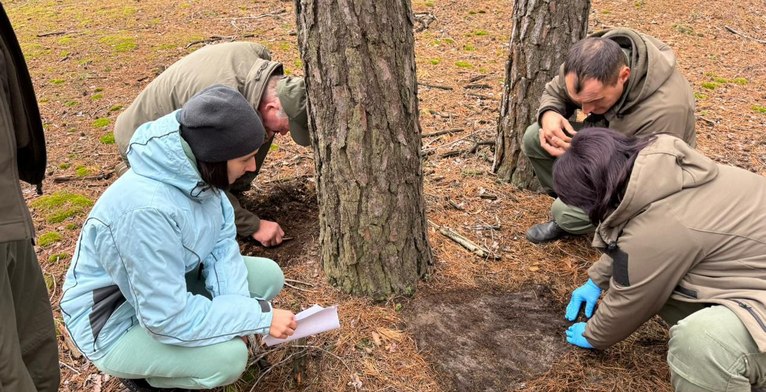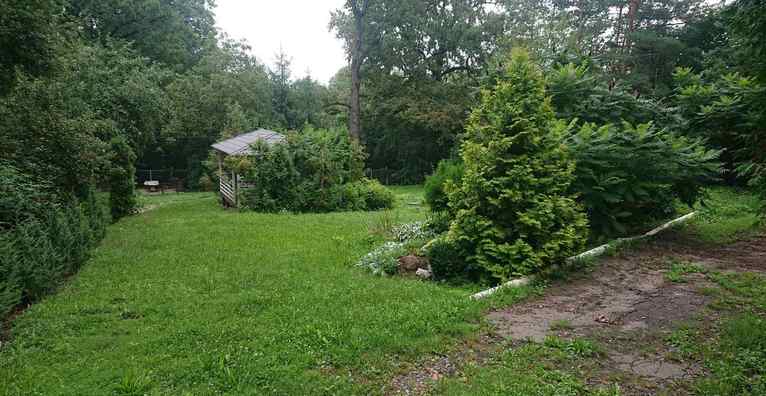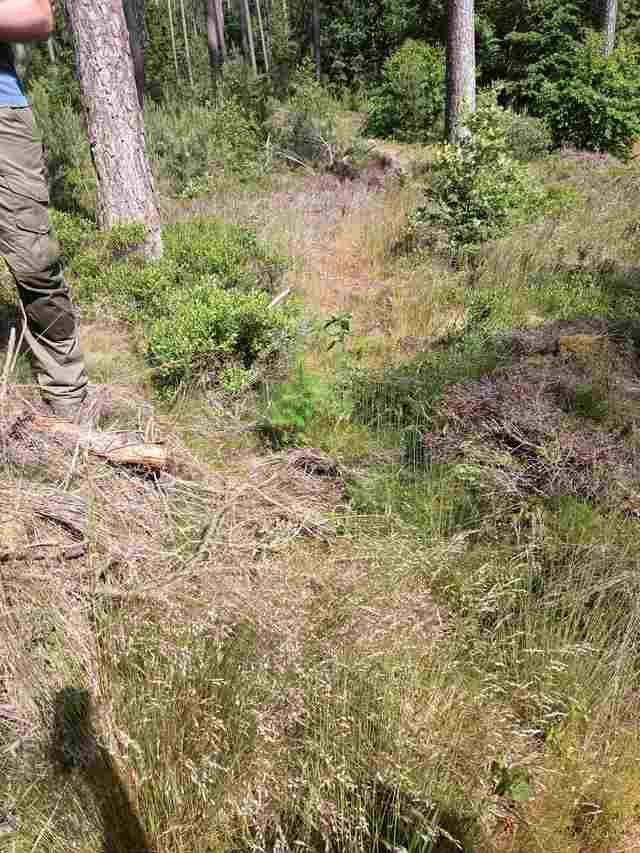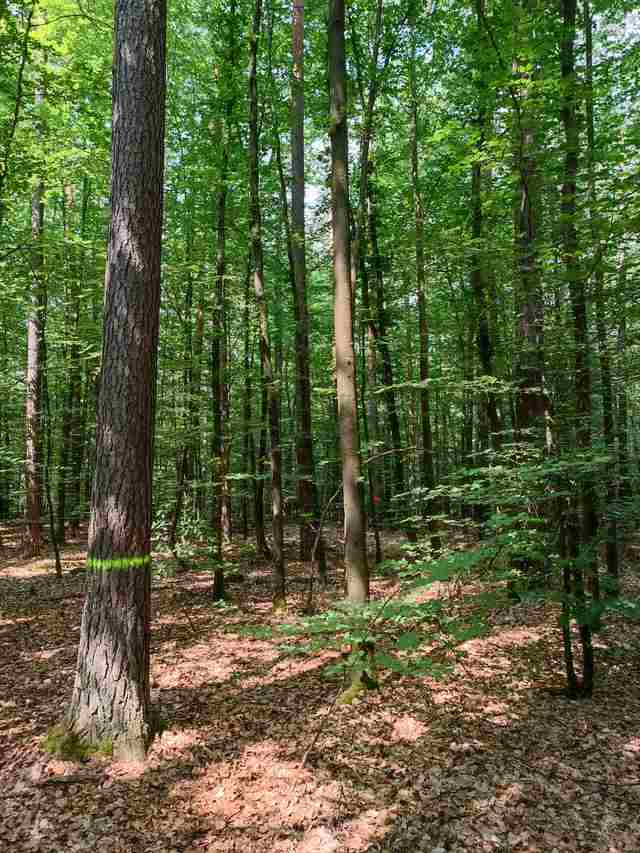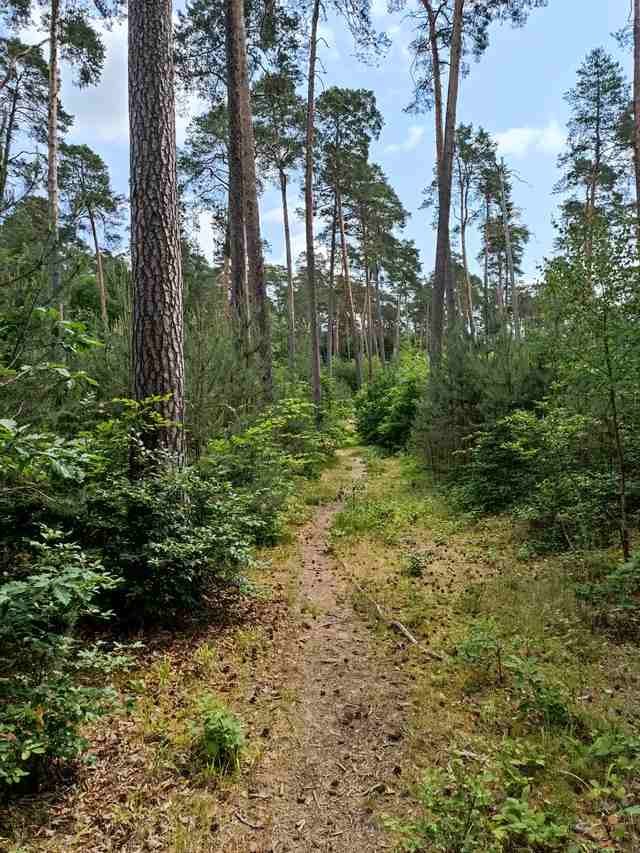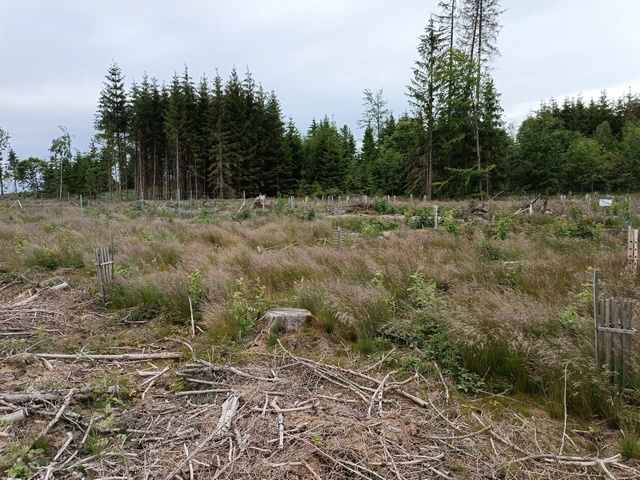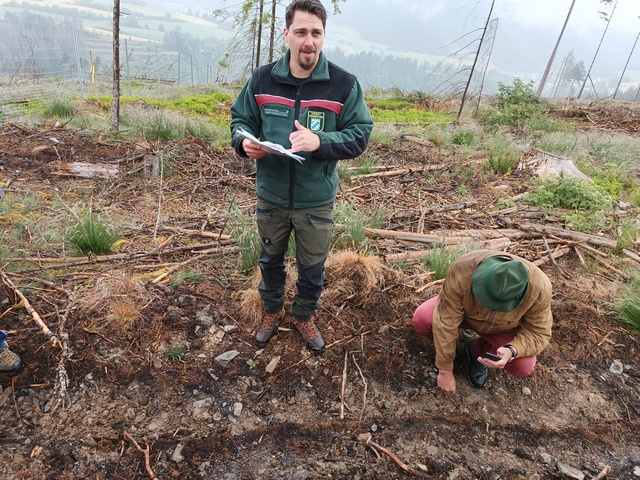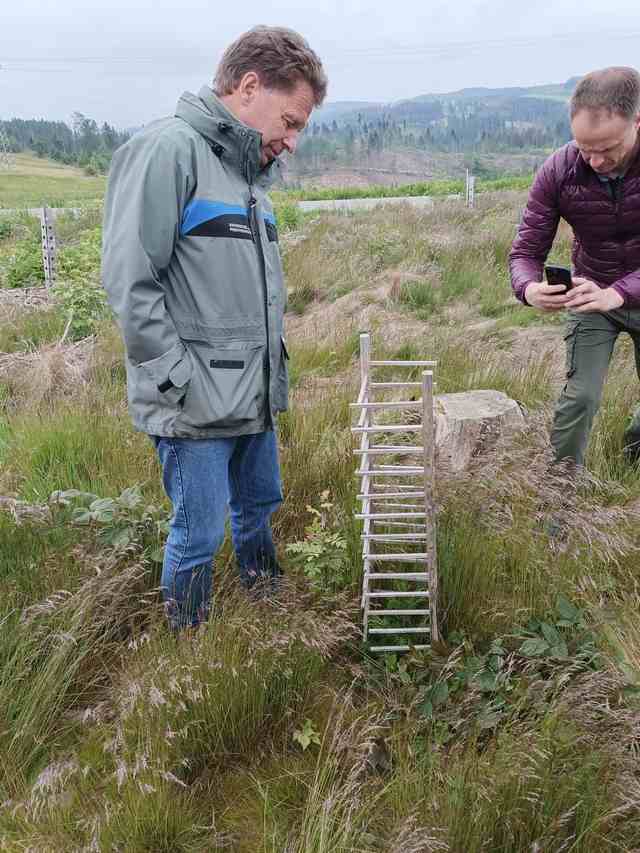The Forest Department of FAO (Shiroma Satyapala and Kitty Horvat) organized a trip for the Ukrainian delegation to Germany from June 5-7, 2023, within the framework of the TCP/RER/3801 project "Enhancing the Resilience of Pine Forests to Bark Beetle Outbreaks and Associated Drying". The purpose was to familiarize with the forest management system in Germany, particularly regarding forest stand transformation aimed at creating climate-resilient forest ecosystems.
The delegation included representatives from the State Forest Resources Agency of Ukraine (Serhiy Korzun), the Ukrainian Research Institute of Forestry and Agroforestry named after G.M. Vysotsky (Kateryna Davydenko), and the State Specialized Forest Protection Enterprise "Kharkivlisozakhyst" (Denys Baturkin). Several forestry enterprises of the Bavarian State Forest Enterprise (BaySF) were selected for study.
Germany is one of the most forest-rich countries in Europe, and the federal state of Bavaria has the largest forest area (2.6 million hectares), with BaySF managing over 800,000 hectares of stands, making it the largest forest association in Germany. BaySF consists of 41 forestry enterprises. The creation of BaySF in 2005 was a key strategy for forest management reform in Bavaria to separate sovereign state functions from economic activities.
During visits to forestry enterprises in Rothenkirchen, Schneittenbach, Roding and others, we learned about the organization of forest enterprises, implementation of close-to-nature forestry methods, and BaySF's nature conservation projects. BaySF representative Heinrich Wimmer presented research results on forest regeneration in BaySF's pine stands (Fig.1). He spoke about BaySF's initiative to restore forest protective functions in connection with climate change, implementing adaptation measures through silvicultural activities, stand reconstruction, and restoration of mixed uneven-aged stands.
BaySF annually harvests about five million cubic meters of wood. Since BaySF is legally obligated to practice exemplary forest management, it provides a wide range of ecosystem services, particularly regarding soil, water, and air protection, as well as recreational services.
Coniferous stands dominate BaySF forests, mainly spruce (41%) and pine (16%), with 3% each of Douglas fir, larch and fir. The area of deciduous stands, particularly beech and oak, is gradually increasing, but currently their share is only 18% and 6% respectively, with other hardwoods and softwoods accounting for 5% and 6%.
Until 2005, traditional Soviet-style forestry was practiced here with clear-cutting systems and subsequent forest cultivation, where spruce or pine dominated the first layer of forest cover. After 2005, BaySF began actively implementing sustainable forest management methods: currently, there are no clear-cuts for final felling at all, and spruce and pine even-aged forests are gradually being replaced by mixed deciduous forests with a predominance of beech and multi-layered stand structure through selective cutting.
BaySF conducts forest management for all enterprises independently (or hires additional specialists if desired) every 10 years and determines the volume of timber harvesting. Decisions on how much and when to cut are made locally by the heads or deputies of each of the 41 enterprises, with trees marked for cutting by foresters who then hire private entrepreneurs with harvesters for logging.
An important stage of our trip was familiarization with methods of creating stable forest crops in the region in pine stands on poor sandy soils. BaySF is implementing a strategy to transform pure pine and spruce forests into mixed forests with at least 4-5 tree species (for example, pine, oak, beech, spruce, fir) to increase the resilience of future forests to the effects of climate change, such as hurricanes, droughts or outbreaks of stem pests.
In pine stands with richer soils, oak regeneration is stimulated. As Heinrich Wimmer explained, acorns of Quercus robur and Q. petraea oaks are sown and fenced to protect them from wildlife (Fig.3). To increase biodiversity, planting material with a closed root system of Douglas fir (Pseudotsuga menziesii), fir (Abies alba) and other species (up to 10%) is also planted (Fig.4).
On the poorest sandy soils, Heinrich Wimmer together with foresters demonstrated successful natural regeneration of pine (Pinus sylvestris) in areas where the first techniques of gradual cutting and promotion of natural regeneration were carried out 10 and 20 years ago. He explained that Bavarian foresters choose 120-140 year old trees with a diameter of 40-45 cm for the next cutting technique, and forest regeneration is planned with mixed methods - through promoting natural regeneration, introducing seeds of deciduous species, fruit trees and shrubs, and if soil conditions allow, planting seedlings with a closed root system to maintain forest biodiversity and create mixed stable stands (Fig.5).
Pine stands on rich soils are gradually being transformed by Bavarian foresters into beech-oak stands with an admixture of pine. Thus, over 20 years, foresters gradually removed pine, creating conditions for beech growth, and in open areas - for oak, resulting in the stand transforming into beech (about 60%) with an admixture of oak (20%), pine (10%) and various other deciduous species (10%). Trip participants agreed that close-to-nature forestry is key to developing stable, economically and ecologically balanced forest stands in Bavaria (Fig.6).
Randolph Schirmer (Bavarian Forest Administration, AWG) explained that in private forest management, owners are supported by the Bavarian Forest Administration through community-level consultations, vocational training and financial support, which promotes the implementation of various approaches to create multifunctional, resilient and close-to-nature forests in Bavaria.
All participants visited a cutting area in spruce stands on low slopes where clear-cutting is permitted. Cuttings were carried out on BaySF lands and in private forests ranging from 2 to 100 hectares. After clear-cutting, individual pine and deciduous trees are left, as well as all wood residues - to enrich the soil (Fig.7). Wood residues are shredded and left in the forest, which is stimulated by the regional administration that compensates forest owners.
After cutting on BaySF lands, soil treatment is carried out and mixtures of seeds of deciduous trees (beech, maple, linden, rowan, fruit trees) and shrubs are planted. This experiment is conducted by BaySF together with a large forestry company to determine optimal technologies for machine seeding in Bavaria. BaySF foresters believe that transforming pure pine or spruce forests into mixed ones is an effective method to overcome climate change risks (Fig.8).
Overall, Bavarian foresters understand the possible consequences of climate change and the need to create mixed forests. So if one tree species dies due to adverse weather conditions or pests, another tree species survives. Recommendations for forest regeneration in Bavaria are constantly reviewed and modified based on new research results and practical experience in forestry. Therefore, Bavarian foresters perceive the forest transformation that began in 2005 as a relatively reliable climate change adaptation measure. Such transformation takes into account economic, environmental and social aspects and is focused on the future creation of sustainable forests (Fig.9).
Randolph Schirmer (AWG) demonstrated BaySF's experimental plots, which are funded and researched by the Bavarian Forest Administration together with the Bavarian State Institute of Forestry (LWF). To further study optimal tree species resistant to drought, clone plantations of various subspecies of black pine (Pinus nigra) have been planted in one of BaySF's enterprises. Since this species grows throughout Europe from Spain to Crimea, is widespread in Asia Minor, Cyprus and the Atlas Mountains, seeds for the plantation were obtained from over 40 clone plantations in different countries. Today the stands are about 20 years old, and differences in the growth of different origins can already be seen. Annual measurements determine main taxation indicators to select the most promising subspecies and clones for further forest regeneration (Fig.10).
Thus, forest management in Bavaria is aimed not only at solving economic tasks, but also takes into account its importance for the environment, especially for preserving forest biodiversity, water balance, maintaining clean air and infrastructure. Sometimes in Bavaria conflict situations arise regarding forest management between foresters and, for example, public associations focused on nature protection. In this case, according to federal laws, preference is given to the protective functions of forests on the same area, which determines the decision made.
The goal of Bavarian foresters is also to create conditions so that all interested parties can use the forest in the future not only as a resource, but from an ecological point of view. Forest adaptation to climate change is an urgent and long-term task, which is why forest transformation into close-to-nature forests began to be implemented in Bavaria about 20 years ago, and today positive changes can be seen.




